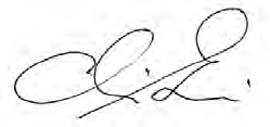Editor’s note: I often ruminate about my sailing memories and how they’ve shaped my life. The Editor’s Log is where I introduce articles on the pages of the magazine, discuss ongoing or upcoming events, or reminisce about sailing adventures past, present and future. Sometimes an event resonates with us in a special way, and the exciting developments during the first race of the Louis Vuitton Cup Finals struck a chord with WindCheck’s Senior Editor Chris Szepessy. As a multihull enthusiast, Zep’s ongoing analysis of the ups and downs of the modern Cup are interesting and informative, but it’s his recollection of two special moments shared with his father a quarter century apart that deserves this space.
I saw the first race of the Louis Vuitton Cup Finals before sitting down to write these words, and with the 34th America’s Cup upon us I’d like to share a few observations and an unforgettable experience that watching the action brought to mind.
The commentary that WindCheck’s friends Gary Jobson, Tucker Thompson, Kenny Read and the rest of the AC 34 broadcast team are delivering on the NBC Sports Network is utterly superb. If Cup racing is not embraced by a massive worldwide television audience, it won’t be because of the job these guys are doing.
Although I respectfully disagree with our friend, former Contributing Editor and Head Curmudgeon Bill Sandberg – whose column “America’s Cup RIP” appeared on these pages a few issues back – there’s a distinct possibility that Bill’s prognostication of this 34th edition not reaching its intended conclusion due to the AC72 catamarans’ tendency to break will prove ominously prescient.
After Luna Rossa Challenge was forced to withdraw from Race 1 with a broken daggerboard, Emirates Team New Zealand needed only a throttled-back cruise around the course to score the first win of the challenger series. But, because things happen instantaneously on these blindingly fast cats, the defending LVC champions nearly crashed and burned. While the AC72s are, in my estimation, by far the most exciting Cup boats ever conceived, their designers and builders have yet to overcome the propensity of high performance racing cats to unexpectedly pitch forward at high speeds.
Even with skipper Dean Barker and crew pullin’ back the reins after rounding the third mark, Aotearoa popped onto her foils and accelerated to 40 knots in a flash. When a sudden gust caused a violent pitch, the port bow plunged several feet below the surface of San Francisco Bay. The Kiwis were lucky to escape with only two crew washed overboard (both immediately recovered unharmed) and a shredded carbon fairing. I witnessed that nosedive with the man who introduced me to sailing four decades ago, my father Jack Szepessy. As we watched the replays, Jack asked, “Remember when that happened to us?” I do indeed.
Jack is a dyed-in-the-wool keelboat guy with little interest in multihulls, but back in 1988 I cajoled him into a ride on my Supercat 19 on a very breezy September afternoon. Sixty years young at the time, he grumbled about getting into a wetsuit, breezebreaker jacket, trapeze harness, life jacket, gloves and booties “just to go daysailing, fer cryin’ out loud.” But as we launched from Jennings Beach in Fairfield, CT in a northwesterly gusting to 30, I knew he’d appreciate the bulky gear when the spray was flying.
I’d intended to reach back and forth along the beach, but Jack requested that we sail down Black Rock Harbor to Fayerweather Yacht Club…his club. The breeze was better outside the harbor, but I relented after realizing he was enjoying the ride…and he wanted to rip past the clubhouse on the trapeze.
We sailed down the harbor and jibed at Captain’s Cove, and I sheeted hard as Jack stepped out on the wire. I don’t know if his “FYC Roundtable” buddies saw us fly a hull past the club, but it’s unlikely that anyone’s ever sailed the “Fayerweather Bight” at a greater velocity. We then passed a well-sailed J/24 as if it was tied to a mooring.
Blasting out of the harbor’s flat water at perhaps 20 knots, we hit a steep chop fetching up from Penfield Reef. The bows dug into the first wave, both rudders lifted clear of the water, and our forward motion ceased. I had chosen a Supercat 19 over a Nacra 5.8 or Prindle 19 because Bill Roberts designed its elliptical bows for pitchpole resistance, and Jack – still on the wire – scarcely lost his footing. A moment later, however, he announced, “That’s enough flying trapeze for me.”
Regardless of the outcome of this America’s Cup, I’ll remember it fondly for evoking a wonderful sailing memory.





